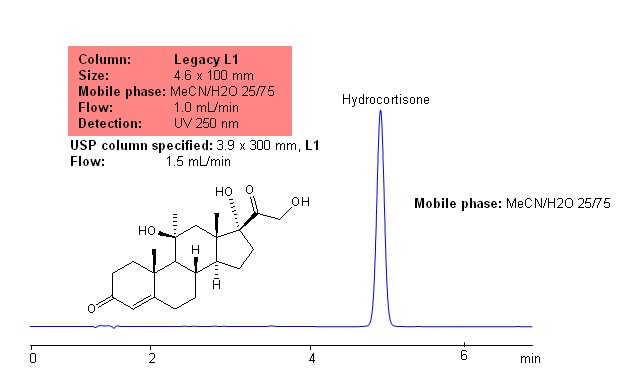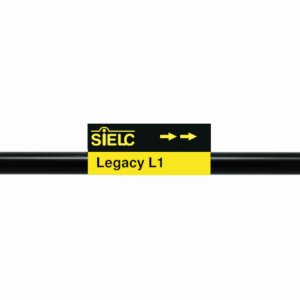
Application Notes: Hydrocortisone is a naturally occurring hormone released during times of stress. Hydrocortisone has been synthesized and is used to treat diseases such as allergic reactions and skin conditions. According to the USP methods, hydrocortisone contains not less than 97 percent and not more than 102 percent of hydrocortisone calculated on the dried basis. The USP HPLC method for the separation of hydrocortisone was developed on Legacy L1 column according to the US Pharmacopeia methodology. L1 classification is assigned to reversed-phase HPLC column containing C18 ligand. Support for the material is spherical silica gel with particles size 3-10 um and pore size of 100-120A.
Application Columns: Legacy L1 C18 HPLC column
Application compounds: Hydrocortisone
Mobile phase: MeCN/H2O 25:75
Detection technique: UV
Reference: USP30: NF35
| Column | Legacy L1, 4.6×150 mm, 5 µm, 100A |
| Mobile Phase | NaH2PO4 pH 7.0/MeCN 88/12 |
| Buffer | NaH2PO4 |
| Flow Rate | 1.0 ml/min |
| Detection | UV, 254 nm |
| Class of Compounds |
Drug, Antibiotics, Hydrophobic, Ionizable |
| Analyzing Compounds | Nitrofurantoin |
Application Column
Legacy L1
SIELC's family of Legacy columns is based on the United States Pharmacopeia's (USP) published chromatographic methods and procedures. Numerous brands have columns used in USP reference standards and methods. USP has created various designations to group together columns with similar types of packing and properties in the solid phase. SIELC's Legacy columns adhere to these strict requirements and properties, allowing you to easily replace older columns that are no longer available without needing to significantly modify your method or SOPs.
Select options




